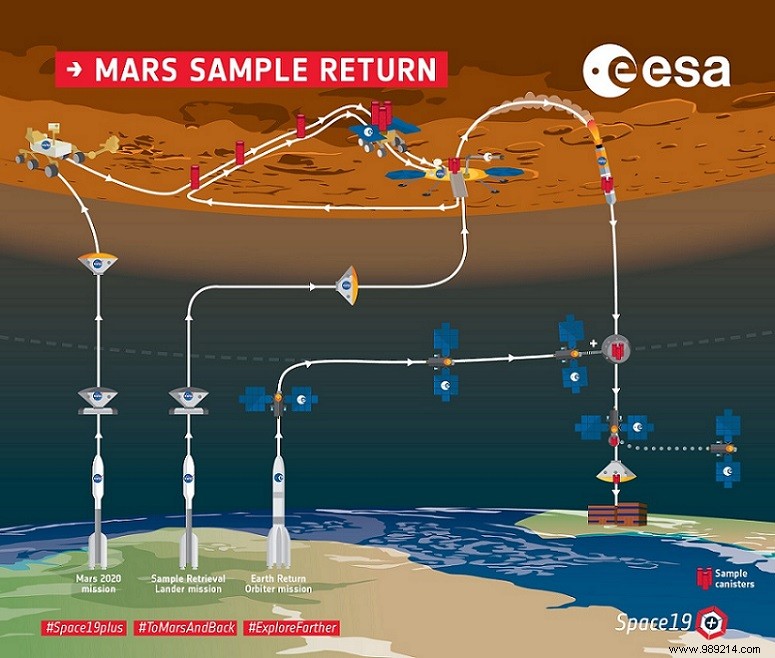A group of independent experts recently looked into the joint NASA and ESA mission to bring Mars samples back to Earth. The report discusses possible cost overruns and possible schedule delays. Nevertheless, the game is worth the candle.
Analyzing Martian rocks taken directly on site is one of the most ambitious dreams of planetary scientists. This project will soon be a reality. As part of a joint mission, NASA and the European Space Agency intend to bring back samples from the Red Planet to the early 2030s .
An independent group of experts has just spent months reviewing and analyzing existing plans. And according to him, this mission is worth it, but it will not be easy. This new report details 44 conclusions and as many recommendations aimed at correcting their weaknesses.
“We unanimously believe that this Mars sample return program should continue, as we believe its scientific value will be extraordinarily high "; communicated the group of experts. And for good reason, this incredible mission could well be the one that will reveal to us the existence of an extraterrestrial life form in the Solar System .
"However, as the first round-trip mission to another planet, this Martian sample return is also an extremely ambitious, technically demanding program and operationally complex “added David Thompson, Chair of the Independent Review Committee.
As part of this mission, named Mars Sample Return , it all starts with Perseverance. Upon landing February 2021 in Jezero Crater, the rover will probe the ground for signs of past life. It is then planned to put the most promising rock samples under seal. These will then be left on the surface waiting to be picked up.
Secondly,in 2026 , NASA will be responsible for sending a new lander to the red planet. Once on the surface (summer 2028), it will deploy a second rover whose objective will be to collect the samples set aside by Perseverance. These will then be deposited in a small rocket which will then take off in the spring of 2029 to place itself in orbit around the red planet.
In the meantime, during the summer of 2028, ESA will send a probe that will collect the samples directly in orbit, before bringing them back to Earth in the spring of 2032 .
You will have understood that this is about a vast undertaking shared by two major space agencies involving multiple spacecraft operating for over a decade . For the first time, a rocket launch will also be attempted from the surface of the Red Planet. Added to this are the incredible challenges to overcome in order to avoid sample contamination.

Thus, the next big step of this great mission is scheduled for 2026. That said, the independent review committee tempers these ambitions somewhat. He suggests that the next launch window, open in 2028, would ultimately be more feasible. NASA and ESA have meanwhile indicated that they will continue to target the year 2026 to send their lander.
On the budget side, the board also suggested these potential delays could increase by at least 30% the financing of the said mission. In the end, it could cost between 3.8 and 4.4 billion dollars to both agencies.
Finally, many of the report's recommendations are organizational in nature. And for good reason, NASA's main spacecraft manufacturing centers are already involved in other ambitious projects. Examples include the development of the James Webb and Roman telescopes and the Europa Clipper mission. ESA also offers several missions under development.
Also, the review committee recommends a series of measures to ensure that the two agencies carefully share the work between each center. He also advises the establishment of additional accommodation facilities near the facilities of the two agencies so that NASA and ESA personnel can work peacefully.